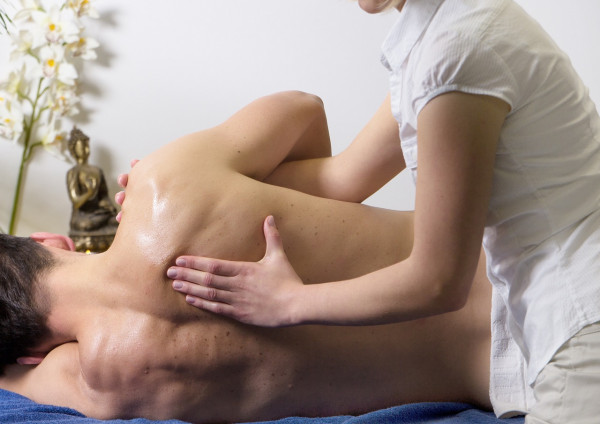Exploring the Pros and Cons of Dry Needling: A Comprehensive Guide

Understanding dry needling therapy:
Dry needling is a therapeutic technique that involves inserting a thin, filiform needle into trigger points, which are tight or knotted areas within a muscle, to stimulate the healing process and reduce pain. The needle used in dry needling is similar to that used in acupuncture, but the two techniques are different in terms of their underlying principles and application.
Dry needling is used by healthcare professionals, such as physical therapists, chiropractors, and acupuncturists, to treat musculoskeletal conditions such as back pain, neck pain, shoulder pain, and knee pain. It may also be used to treat headaches, tennis elbow, carpal tunnel syndrome, and other conditions that involve muscular tension and trigger points.
During a dry needling session, the practitioner will insert the needle into the trigger point and manipulate it to create a twitch response in the muscle. This twitch response is thought to release tension in the muscle and promote the healing process. Dry needling may be combined with other techniques, such as massage and stretching, to enhance its effects.
Dry needling pros:

-
Reduced pain and tension: Dry needling is effective in reducing pain and muscular tension in the treated area. By targeting trigger points, it can help release tight muscles and relieve pain.
-
Non-invasive: Unlike some other therapies, such as surgery or cortisone injections, dry needling is a non-invasive technique that does not require incisions or anesthesia.
-
Fast-acting: Many people experience immediate relief after a dry needling session, and the effects can last for several days to weeks.
-
Improved mobility: By reducing pain and tension in the muscles, dry needling can improve mobility and range of motion in the affected area.
Dry needling cons:

-
Side effects: Dry needling can cause side effects such as soreness, bruising, bleeding, or infection at the needle insertion site.
-
Limited research: While there is some research supporting the effectiveness of dry needling, more high-quality studies are needed to fully understand its benefits and potential risks.
-
Need for trained professionals: Dry needling should only be performed by a trained and licensed healthcare professional, as improper use of needles can cause serious harm.
-
Not covered by insurance: In some cases, dry needling may not be covered by insurance, and out-of-pocket costs can be expensive.
How effective is dry needling therapy?
The effectiveness of dry needling therapy varies depending on the individual and the condition being treated. Some studies have shown that dry needling can be effective in reducing pain and improving function in people with musculoskeletal conditions such as low back pain, neck pain, and shoulder pain. However, more high-quality research is needed to fully understand the effectiveness of dry needling and how it compares to other treatments.
Dry Needling Therapy Result
The results of dry needling therapy can vary depending on the individual and the condition being treated. Many people report immediate relief of pain and tension after a dry needling session, with the effects lasting for several days to weeks. In some cases, multiple sessions may be needed to achieve optimal results. It is important to note that dry needling is often used as part of a comprehensive treatment plan that may also include exercise, manual therapy, and other interventions.
Overall, the results of dry needling therapy can be positive for many people with musculoskeletal conditions, but it is important to speak with a healthcare professional to determine if it is a suitable treatment option for your specific needs.
FAQs about dry needling
-
What is dry needling? Dry needling is a therapeutic technique used by healthcare professionals to alleviate pain and muscular tension. It involves inserting a thin, filiform needle into trigger points within a muscle to stimulate the healing process and reduce pain.
-
How is dry needling different from acupuncture? While both techniques involve the use of thin, filiform needles, they have different underlying principles and applications. Acupuncture is based on traditional Chinese medicine and focuses on the flow of energy (Qi) along meridians in the body, while dry needling is based on Western medical concepts and focuses on the anatomy and physiology of the musculoskeletal system.
-
What conditions can dry needling treat? Dry needling is typically used to treat musculoskeletal conditions such as back pain, neck pain, shoulder pain, and knee pain. It may also be used to treat headaches, tennis elbow, carpal tunnel syndrome, and other conditions that involve muscular tension and trigger points.
-
Is dry needling safe? Dry needling is generally considered safe when performed by a trained and licensed healthcare professional. However, it can cause side effects such as soreness, bruising, bleeding, or infection at the needle insertion site.
-
How many dry needling sessions will I need? The number of dry needling sessions you will need depends on the individual and the condition being treated. Some people may experience immediate relief after one session, while others may require multiple sessions to achieve optimal results. Your healthcare professional can provide guidance on the recommended number of sessions for your specific needs.
To sum up
In conclusion, dry needling is a therapeutic technique used to alleviate pain and tension in muscles. While it has some potential benefits, it also carries risks and limitations. Before considering dry needling, it is important to speak with a healthcare professional to determine if it is a suitable treatment option for your condition.
If you're interested in dry needling therapy, it's important to speak with a qualified healthcare professional to determine if it's a suitable treatment option for your condition. Contact a local dry-needling therapist today to schedule a consultation and learn more about this technique. With the right treatment plan, you can find relief from pain and tension and get back to doing the things you love.
